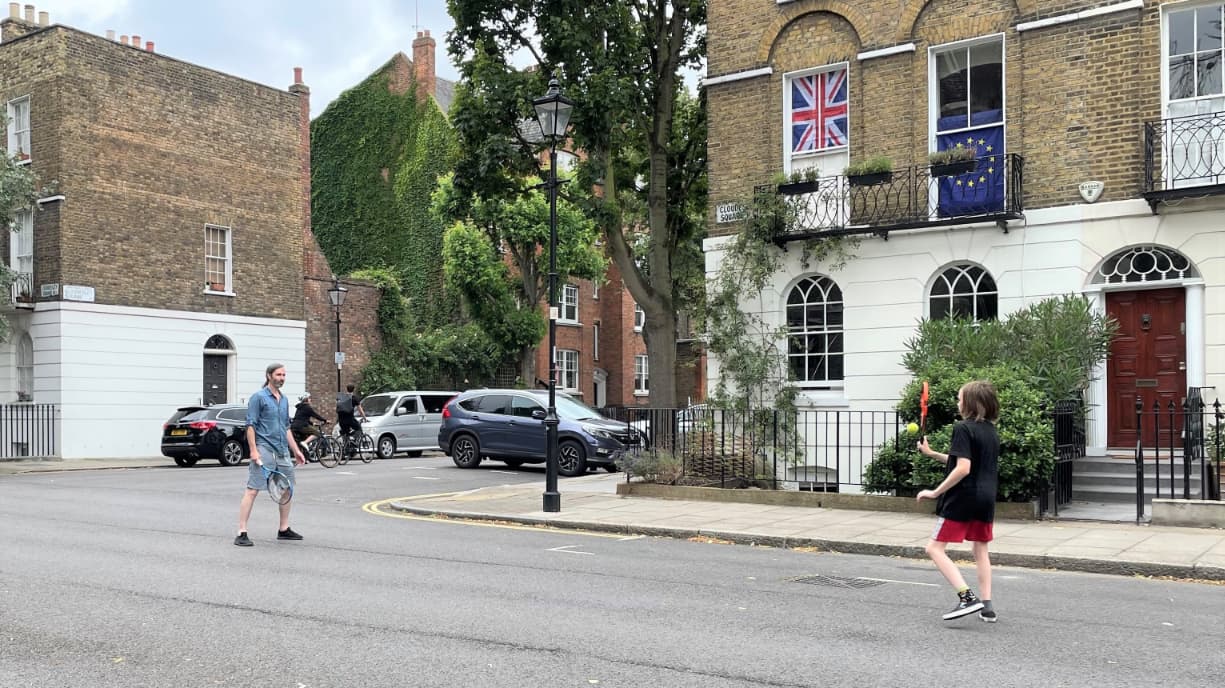Low-Traffic Neighbourhoods work by discouraging driving while simultaneously making walking and cycling more attractive. Two early studies indicate that this modal switch is indeed happening.
Study 1 finds:
there are 30 fewer car and taxi trips for every new 100 cycle trips induced by new cycling infrastructure.
In that research “cycling infrastructure” included LTNs.
Study 2 finds:
people in one London borough cut their driving by nearly a mile a day on average after LTNs were introduced.
For more information about these two studies – keep reading:
Study 1
Published in the government portal: Cycling diversion factors with this summary:
This report reviews recent and relevant literature on cycling diversion to help identify suitable support of the appraisal of active travel instruments. It was undertaken by academics from the University of the West of England for the Department for Transport. Following a multi-stage literature search, sift and review process, researchers estimate there are 30 fewer car and taxi trips for every new 100 cycle trips induced by new cycling infrastructure. Previous research suggested there were 19 fewer car and taxi trips for every 100 new cycle trips.
Report itself: Cycling Diversion Factors, Rapid Evidence Assessment, Summary Report
Study 2
Academic study published in the journal Transport Findings:
Transport Findings June 07, 2023 AEST The Impact of 2020 Low Traffic Neighbourhoods on Levels of Car/Van Driving among Residents: Findings from Lambeth, London, UK Anna Goodman, Anthony A. Laverty, Jamie Furlong, Rachel Aldred.
Abstract:
We examined how residents’ driving changed after the implementation of low traffic neighbourhoods (LTNs) in Lambeth, London. We used postcode plus numberplate data from controlled parking zones, matched to annual MOT records. From 2018-2020 (‘pre’) to 2021-2023 (‘post’), mean past-year driving decreased by 0.7km/day among residents living inside the new LTNs and increased by 0.6km/day among residents in control areas elsewhere in Lambeth. This represents a difference-in-differences decrease of 1.3km/day (95% confidence interval 0.3 to 2.4) in LTN versus control areas, or a 6.4% relative decrease. Our findings suggest that residents started driving less once their area became an LTN.
Reporting on this study, The Guardian wrote:
Low-traffic neighbourhoods seemingly can prompt residents to drive less, with a study showing people in one London borough cut their driving by nearly a mile a day on average after LTNs were introduced. While the research covers only four LTNs created in 2020, it is potentially significant because it contradicts the objection from opponents of the schemes that they make people drive further on less direct routes.
The new study, published in the journal Transport Findings, used mileage data logged as part of MOT tests from thousands of vehicles in Lambeth, south London. It showed an average decline in driving of 0.7km (0.4 miles) a day for every vehicle inside LTNs, two years after they were installed, compared with a rise of 0.6km for streets 200 metres or more outside their boundaries, for a net 1.3km (0.8 miles) reduction, or 6.4%.




